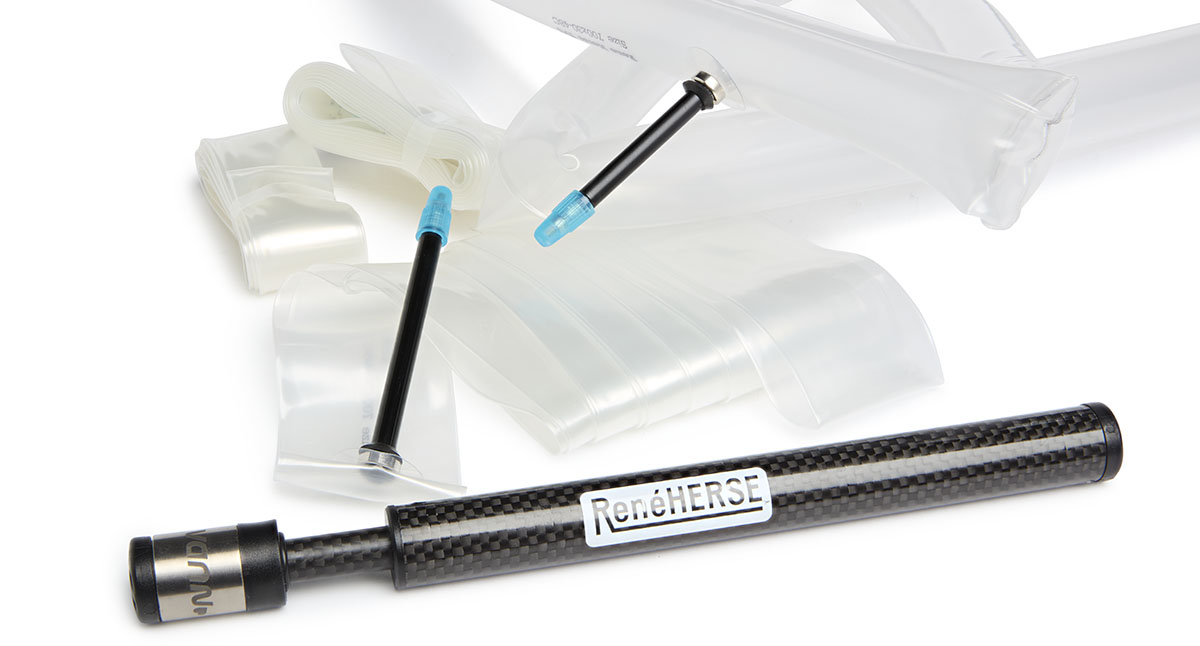Rene Herse Introduces TPU Tubes
We’re beyond excited to introduce the new Rene Herse TPU tubes. They take the performance of our tires to the next level.
Why tubes? Tubeless is great for many applications—anytime you ride on debris-strewn highways, where the sealant will seal small punctures from glass and steel wires. Or during gravel races, where you’re riding in a peloton and don’t even see the rocks you’re hittting. The downside of tubeless is the hassle of having to top up sealant frequently. Who hasn’t pulled a bike out of the basement after a few weeks of not riding it, only to find both tires flat? Even if they hold air again after inflating and spinning the wheels, you never know whether they’ll suddenly lose air again mid-ride.
Even when all is well, the sealant sloshing around inside the tires adds resistance, making tubeless tires slower than they need be. That is probably one reason why quite a few pro riders race on tubes—Soudal-Quickstep and female superstar Lotte Kopecky are just two examples. And yet those black butyl tubes that have been the standard for more than a century could use some improvement.
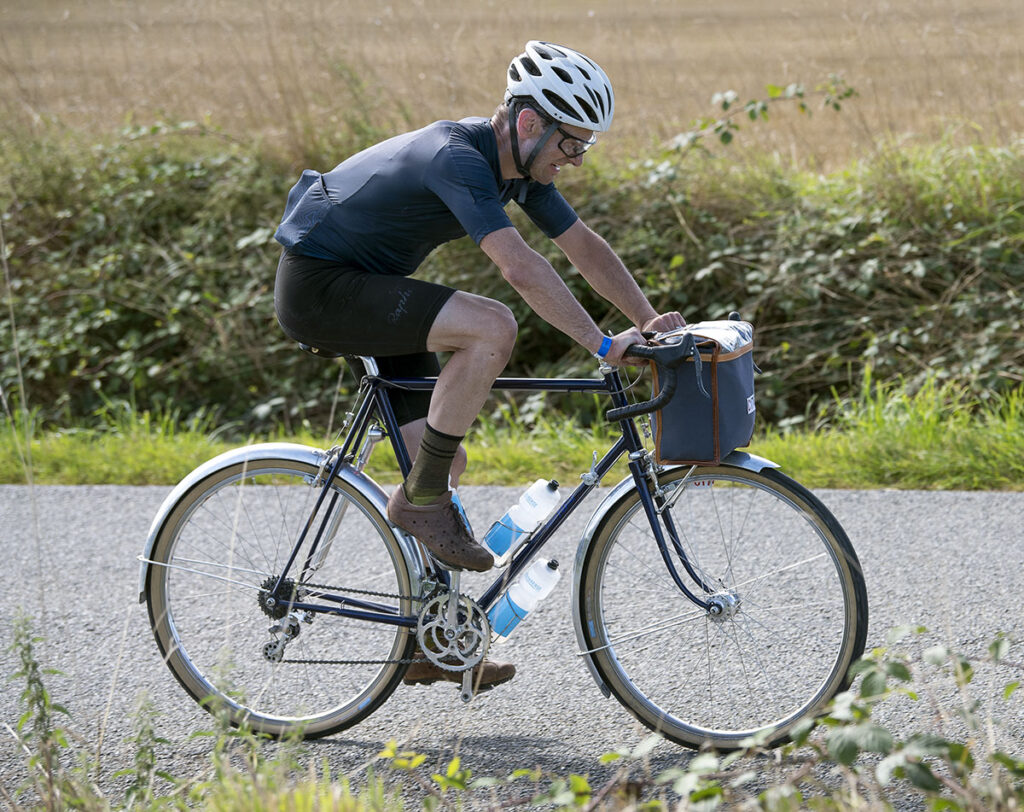
I’ve experimented with latex tubes over the years. The best ones are found inside high-end tubular tires. They are ultra-thin, ultra-light and ultra-fast. But they lose air quickly. I ran a set of prototype latex tubes in last year’s Paris-Brest-Paris (above). Performance and comfort were great, but I don’t think I’d do it again. Since the tubes leaked air so fast, I had to start out with much higher tire pressure than was ideal, and yet I still had to re-inflate my tubes shortly after the half-way point. It was clear that we needed a better solution!
TPU tubes have been tempting for a while. TPU stands for thermoplastic polyurethane, a material that is far stronger than butyl, the black rubber traditionally used for tubes. That makes TPU an ideal material for bicycle tubes—at least in theory. In practice, early TPU tubes sometimes shredded themselves when riding on rough gravel. And many TPU tubes suffered from mysterious leaks.
We figured that the drawbacks of TPU tubes could probably be overcome. But first we needed to figure out whether they really offered better performance. TPU tubes test well on steel drums, but we know that doesn’t mean much for real-road performance. (After all, ultra-high tire pressures also test well on steel drums.) So we tested prototypes of our TPU tubes in our roll-down tests, with a rider on the bike, to see how they roll in the real world. The good news: They roll even faster on real roads than on steel drums. In fact, their speed is equal to ultra-thin latex tubes. A full report of that testing will be in the upcoming Spring 2024 edition of Bicycle Quarterly.
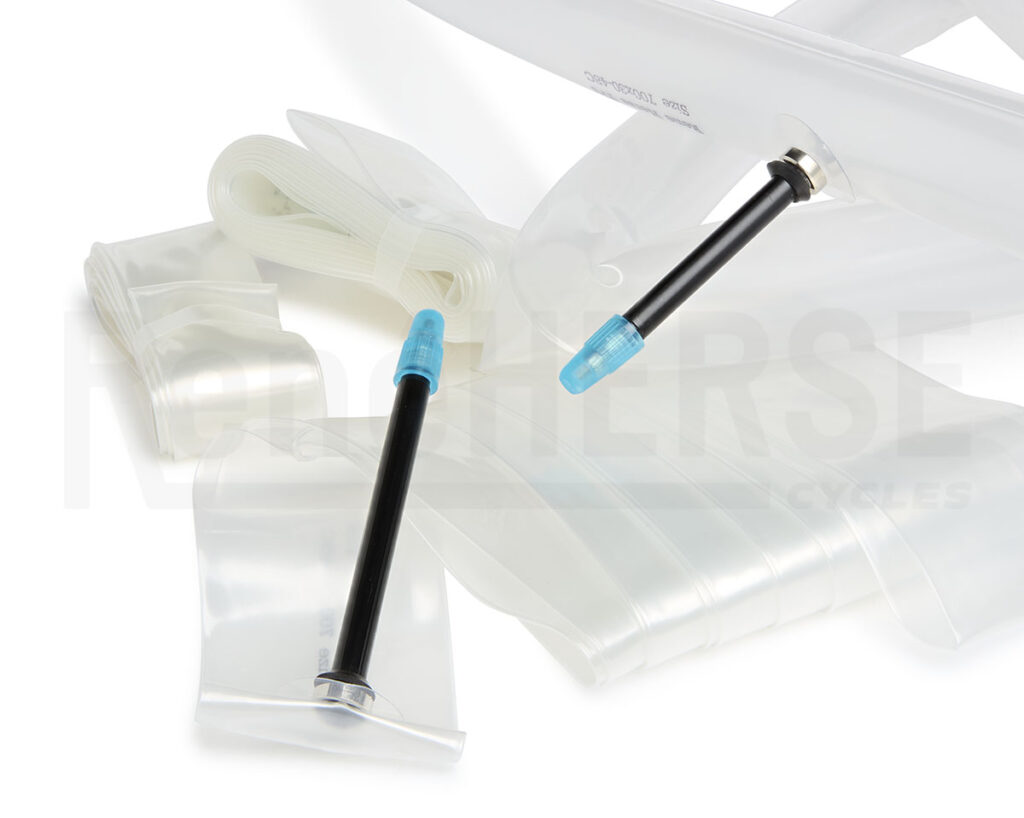
What about the fragility and air leakage? The air leakage was easy to figure out: The valve stems of most TPU tubes are made from plastic, and they deform when the (metal) valve core is screwed in. Then the tube leaks, not because the material is porous, but because the valve doesn’t seal. We decided to use a patented technology to create all-metal valves. In our testing, they don’t leak any more than butyl tubes—we only have to inflate our tires every couple of weeks.
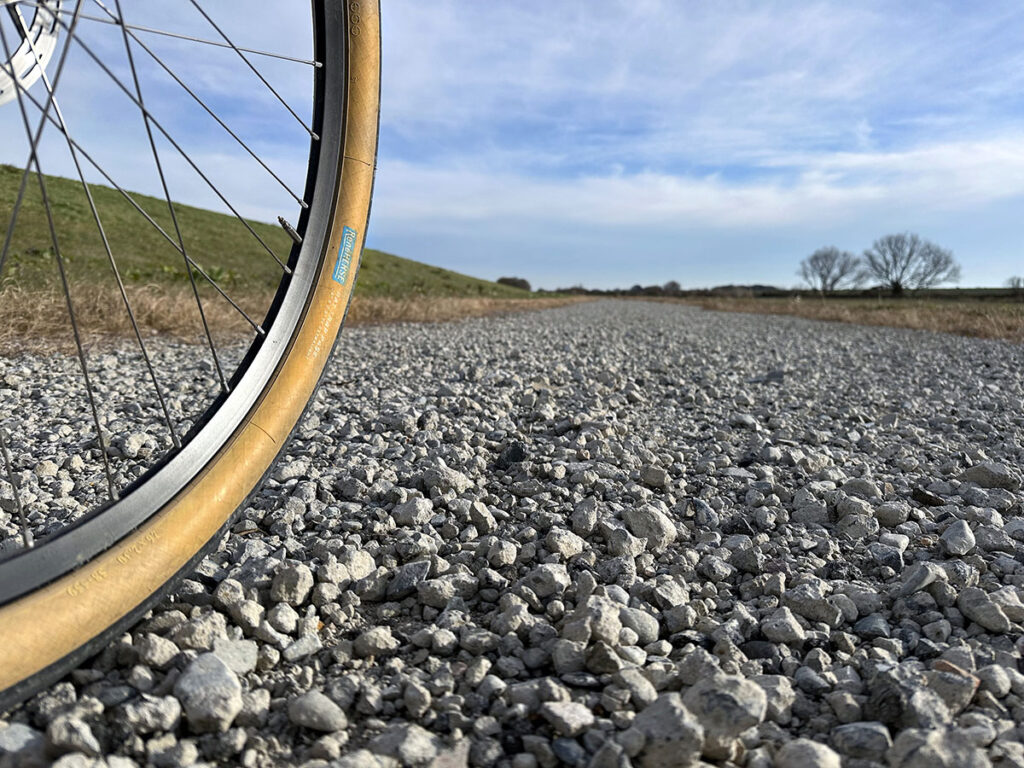
For durability, we increased the thickness of the material slightly, and we worked with a supplier in Germany to create the highest-quality tubes with uniform wall thicknesses. Rene Herse TPU tubes are still superlight—the version for narrow racing tires weighs just 32 grams. (A comparable superlight butyl tube weighs 85 grams.) But we aren’t pushing the tubes to the absolute limit. For a few grams in additional weight, we’ve increased durability and resistance to punctures and pinch flats—and we’ve also made installation easier, especially with today’s tubeless rims.
Before we signed off on the production run, we tested prototypes on all types of terrains, at different pressures, and with high power outputs. They’ve passed with flying colors.
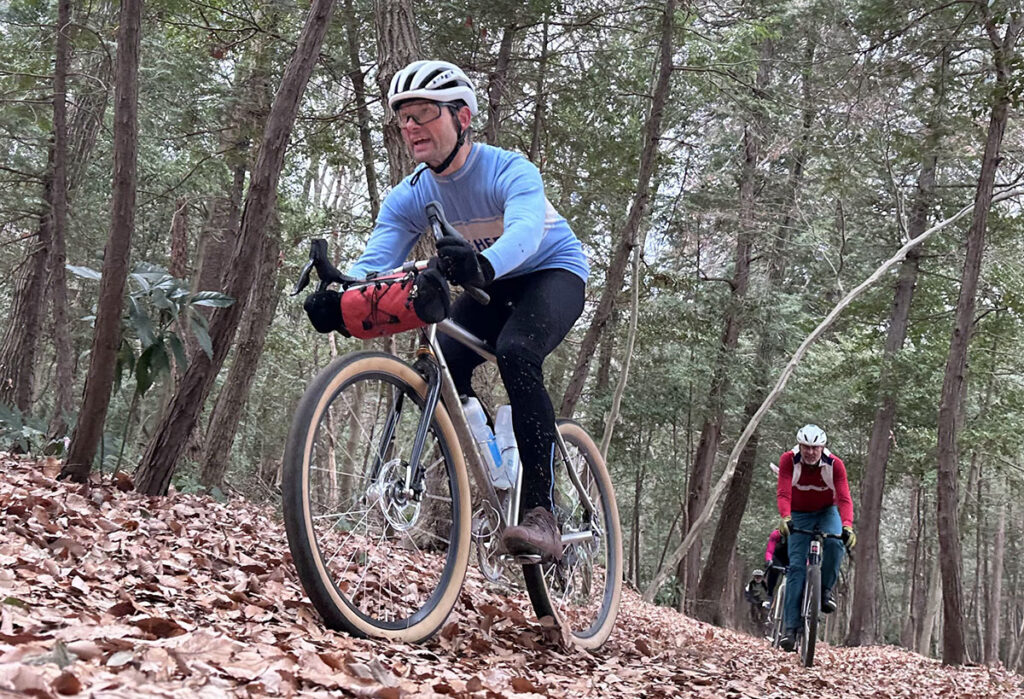
During one ride in Japan, running ultra-low pressures, I bottomed out eight times, yet the tubes didn’t pinch-flat. I haven’t had a flat with these tubes yet, but if (or when) that happens, TPU tubes are easy to fix: Simply wipe the area with an alcohol wipe and stick on a patch. No need to roughen the tube with sandpaper or use vulcanizing fluid. Rene Herse is also offering a patch kit. When I tested the patches, I had to create a puncture. I was surprised how hard it is to puncture the Rene Herse TPU tubes with a sharp needle. They really are tough!
There is a lot to like about our new TPU tubes:
Ultra Light:
- 1/4 the weight of standard butyl tubes
- 1/3 the weight of ultralight butyl tubes
- 1/3 the weight of tubeless sealant
Ultra Small:
- 1/4 the volume of standard butyl tubes. That makes them ideal as spares; also as a backup if you run your tires tubeless.
Ultra Fast:
- Less rolling resistance than butyl tubes or tubeless
- Similar resistance as lightweight latex tubes, but without air leakage.
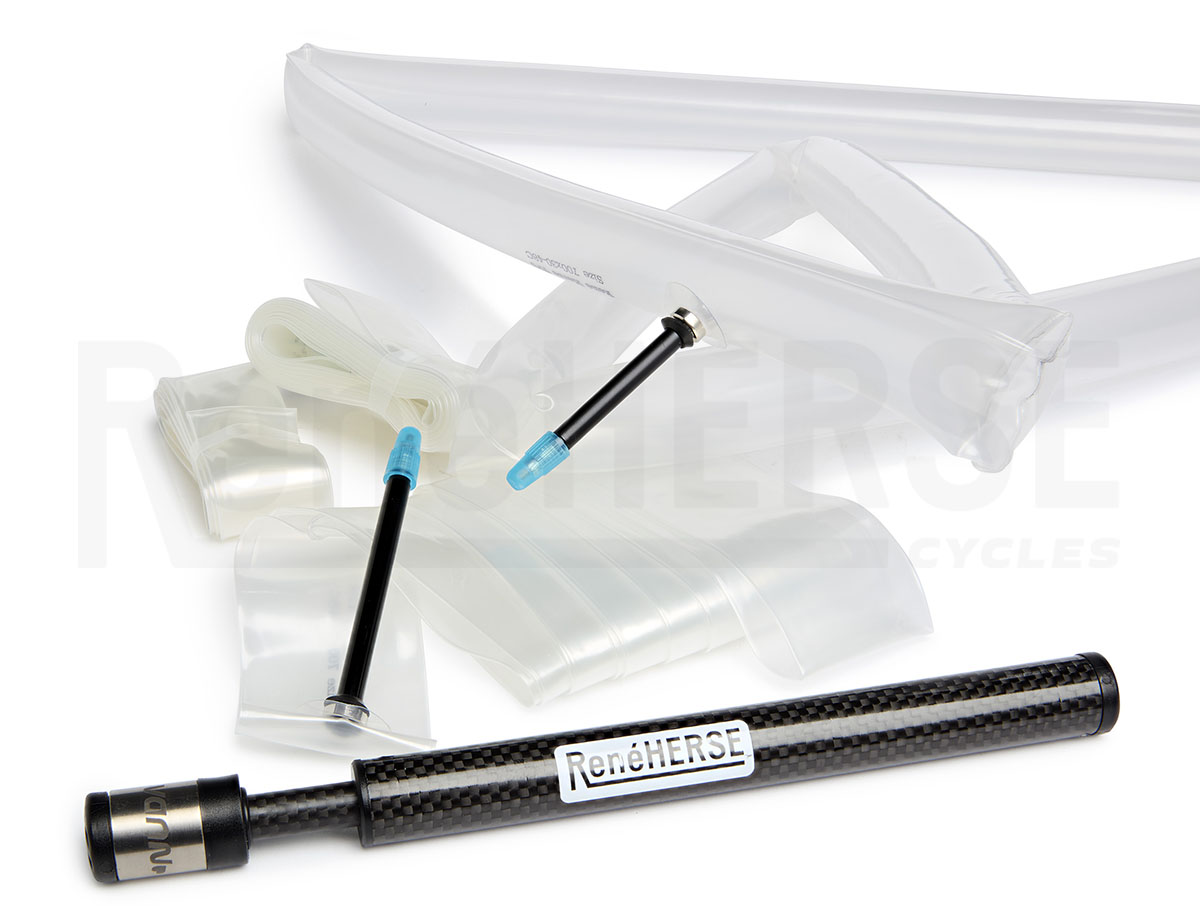
Rene Herse TPU tubes come in 700C for tires from 20 to 68 mm wide, as well as in 650B / 26″ for tires from 30 to 68 mm wide. We offer two valve lengths: The 50 mm valve stems are polished, the 70 mm are black. The stems don’t have threads, so they are easy to use with press-on pump heads. (With tubes, there’s no need for valve nuts. In fact, it’s better if the valve can move in case the tube shifts a little during installation.)
The Rene Herse TPU tubes are in production now. We expect the first deliveries in mid-April.
More information:


